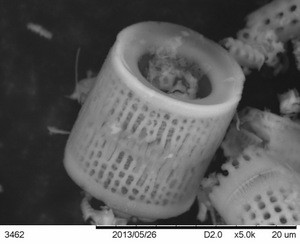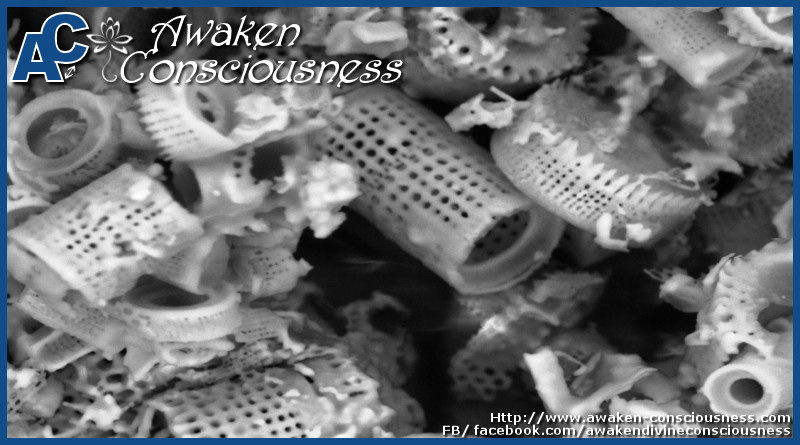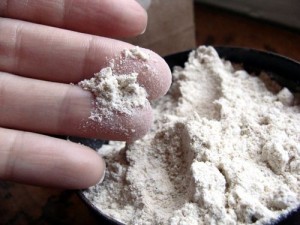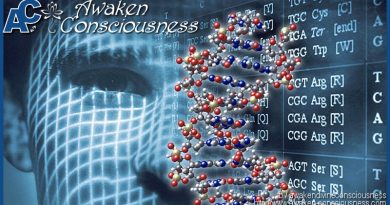DO YOU D.E. TOO?
DO YOU D.E. TOO?
I have been ingesting D.E. or Food grade diatomaceous earth for over 2 years now and it is a substance that everyone should be made aware of. I was gong to write an article about this but when doing research I found already so much good articles out there that I decided not re re-invent the wheel, but just spread the knowledge that’s already out there.
If you have not heard of D.E before, read on, if you already heard of D.E., also read on because you might just discover a few new ways in how to use this magical powder!
D.E. is derived from the remains of diatoms, or oceanic unicellular algae – fossilized phytoplankton. It is an organic, non-toxic, chemical free, natural mineral, making it suitable for use anywhere.
The properties of D.E. are very strange to say the least. It is at least 30 million years old, It carries a negative ionic charge. This study suggests it helps to reduce parasites in chickens, and many experts believe this is due to its negative charge and cylindrical shape. The thinking behind this is that positively charged bacteria and parasites (plus some viruses) may be attracted to it like magnets are attracted to one another. Because of its shape, the pathogens get trapped in the center and carried out of the body.

It’s rich in silica, which is essential for healthy teeth, bones, hair, skin and nails.
It’s incredibly hard. On the hardness scale, diamonds are a 10 and DE is an 8. This has a variety of benefits, which we’ll cover below.
It’s highly antimicrobial.
15 USES FOR DIATOMACEOUS EARTH
1. Deodorant
Though our primary detox pathways are through the liver, kidneys, colon and lymph system, our skin and lungs also assist with detoxification. We don’t want to block our body’s ability to sweat with antiperspirants, but we can keep things sweet in the underarm area by neutralizing odor. Diatomaceous earth is great for this. And because it tends not to be quite as alkaline as baking soda – which is commonly used in homemade deodorants – it is often preferred by individuals who have experienced rashes or irritation after application. Here’s my recipe.
2. Toothpaste
Sprinkle a little DE over your tooth soap, toothpaste, or homemade tooth powder for extra deep cleaning power. Because it is abrasive only a little is needed to effectively remove stains, and only every once in awhile.
3. Facial Scrub & Mask
Because it is very fine, diatomaceous earth makes a gentle facial exfoliant and mask. In addition to it’s main component, silica, DE also contains minerals such as calcium, magnesium, zinc, copper, selenium and phosphorous. Since minerals can be absorbed through the skin, this is a wonderful way to complement a mineral-rich diet.
To use: Mix about 1 tablespoon of diatomaceous earth with water, milk, aloe vera juice or diluted honey to make a thick paste. Using your fingertips, lightly massage the paste onto your face using small, circular motions. Allow the paste to set for 1-2 minutes, then gently remove with a warm washcloth using small, circular motions. This last stage is when most of the exfoliation occurs. Follow with toner (if you use it) and moisturizer.
Special note: Avoid using this scrub near the eyes or on chapped skin.
4. Supports Collagen Production
Yeah, you read that right. Silica, which is a type of silicon, is essential for collagen formation. In one study, animals that were supplemented with a small amount of highly bioavailable silicon had a 12% higher collagen concentration than animals who weren’t. (Source: Jarrow Formula’s application to FDA for their silicon supplement, BioSil)
Silica is found in many foods, such as leeks, green beans, garbanzo beans, strawberries, cucumber, mango, and asparagus, and of course DE is about 80-90% silica.
5. Nourishes Hair
In this study, supplementing women with a bioavailable form of silicon (choline-stabilized orthosilicic acid) increased the strength and thickness of their hair. Because it is less bioavailable, the silica found in DE has to be consumed in higher quantities than the choline-stabilized orthosilicic acid. However, some people think this is a good thing because it is thought to have cleansing properties.
6. Strengthens Nails
Along with gelatin and biotin, silica is essential for building strong, healthy nails.
7. Supports Healthy Cholesterol Levels
This study suggests that diatomaceous earth may be beneficial for lipid metabolism and cholesterol levels. Who knew?
8. Strengthen Teeths and Bones
Silica is essential for the formation of the hard outer enamel that protects our teeth, and according to this PubMed article it is likewise beneficial for overall bone formation and health.
9. Food Storage
DE is added to grains and legumes such as wheat, maize, beans and barley to prevent spoilage. It keeps food dry, prevents mold, and protects against pests like weevils and beetles.
10. Bed Bugs
Diatomaceous earth is registered with the FDA for use against bed bugs, fleas. Here is a tutorial for applying it throughout the home.
A couple of notes: First, the product in this tutorial contains 2% synthetic ingredients. Though it is certainly better than some pesticides used to eliminate bed bugs, I would go with 100% DE before trying it.
Second, there are a lot of cautions against breathing in DE. While I would definitely use a mask to apply using the method in the video, I found this statement over on I Breathe, I’m Hungry helpful:
“I received an email from Larry Smith, the President of Earthworks, who wanted to clear up the misconception about any dangers of inhaling food grade diatomaceous earth – here’s what he wrote: ‘This is a misunderstanding about food grade DE. There are 2 kinds of DE—food grade and filter grade (used in swimming pool and other filters) Only the filter grade is dangerous to breathe. The “dangerous” part of DE is the amount of crystalline silica that is in it. Filter grade is 65% crystalline silica while food grade is less than 1/10 of 1%! The world health org. has said that diatomaceous earth is safe to breathe as long as the crystalline content is under 2%. Food grade is 20X lower than even that level!!’
Support us with a cup of coffee?
If you like what Awaken Consciousness is offering you, would you please support us by buying us a cup of coffee? Any support and donation is very welcome and will allow us to keep going just a little longer and keep this website add free. Just slide the slider left <- or right -> to change the amount of coffee you'd like to share with us 😉 Thank you !
11. Garden Pest Control
DE can be used to kill slugs, beetles, and other unwanted pests in the garden. Here’s how to use it. I would repeat the process every 2-3 days to break the life cycle of fleas.
12. Fleas
I can’t help but giggle a little when watching this video on how to treat pets for fleas using DE, but it has some very good info . . .
Something to keep in mind is that it’s also important to treat any carpet pets come into contact with, plus areas they like to nap in, etc. Here’s how to treat your carpet and home for fleas using DE.
13. Cockroach, Spider, Tick and Earwig Control
DE is approved for use against all of these home pests. Experts recommend using a hand duster to puff it into cracks and crevices where bugs are likely to hang out.
14. Fridge Deodorizer
Just like baking soda, a small container/box of DE can be left in the fridge or freezer to neutralize odors. Needs to be replaced every 1-2 weeks.
15. Garbage Can Deodorizer
Sprinkle in the bottom of the can to help neutralize odors.
A personal interest of mine is the application of D.E in agriculture.
Food production
Natural Silica provides the plant with energy and reinforces the plant’s ability to protect itself against biotic and a-biotic stress, and soil treated with Natural Silica will have optimal fertility through improved water, physical and chemical properties and by allowing nutrients in the soil, such as phosphorus, to remain in a plant available form.
All crops benefit from silica nutrition.
Benefits for growers
Natural silica significantly increases crop yield which means increased revenue for growers. Natural silica provides the plant with energy and reinforced its ability to protect itself against stress. Soil treated with DE will have optimum fertility through improved water, physical and chemical properties and by allowing nutrients in the soil, such as phosphorus, to remain in a plant available form.
Increased production yields
All crops benefit from silica nutrition and when used as recommended, typically average a 15% to 35% increase in yield within the first season. Crops such as rice and sugarcane, which can take up more silica than nitrogen, typically average a 20% to 70% increase in yield.
WHAT KIND OF DIATOMACEOUS EARTH SHOULD I USE?
Only food grade, never stuff you find at the pool supply shop.
HOW I TAKE DIATOMACEOUS EARTH INTERNALLY
Most people say diatomaceous earth should be taken on an empty stomach. What this means is somewhat vague, but from what I can tell best practices are to take it:
1. First thing in the morning, then wait 30 minutes to eat
2. Three hours after eating
When I take DE, I start with one teaspoon in a tall glass of water (8 oz.) and worked my way up to one tablespoon over the course of a week. Like all of the supplements I take, I schedule breaks from DE so that my body doesn’t get overwhelmed. In the case of DE, I prefer to use it for about a month continuously, then I take 1-2 teaspoons once or twice a week after that.
Do progress with caution and stop if you have any adverse experience ingesting D.E.
GDJ
Support us with a cup of coffee?
If you like what Awaken Consciousness is offering you, would you please support us by buying us a cup of coffee? Any support and donation is very welcome and will allow us to keep going just a little longer and keep this website add free. Just slide the slider left <- or right -> to change the amount of coffee you'd like to share with us 😉 Thank you !
Source: Mommypotamus.com, usesfordiatomaceousearth.com





